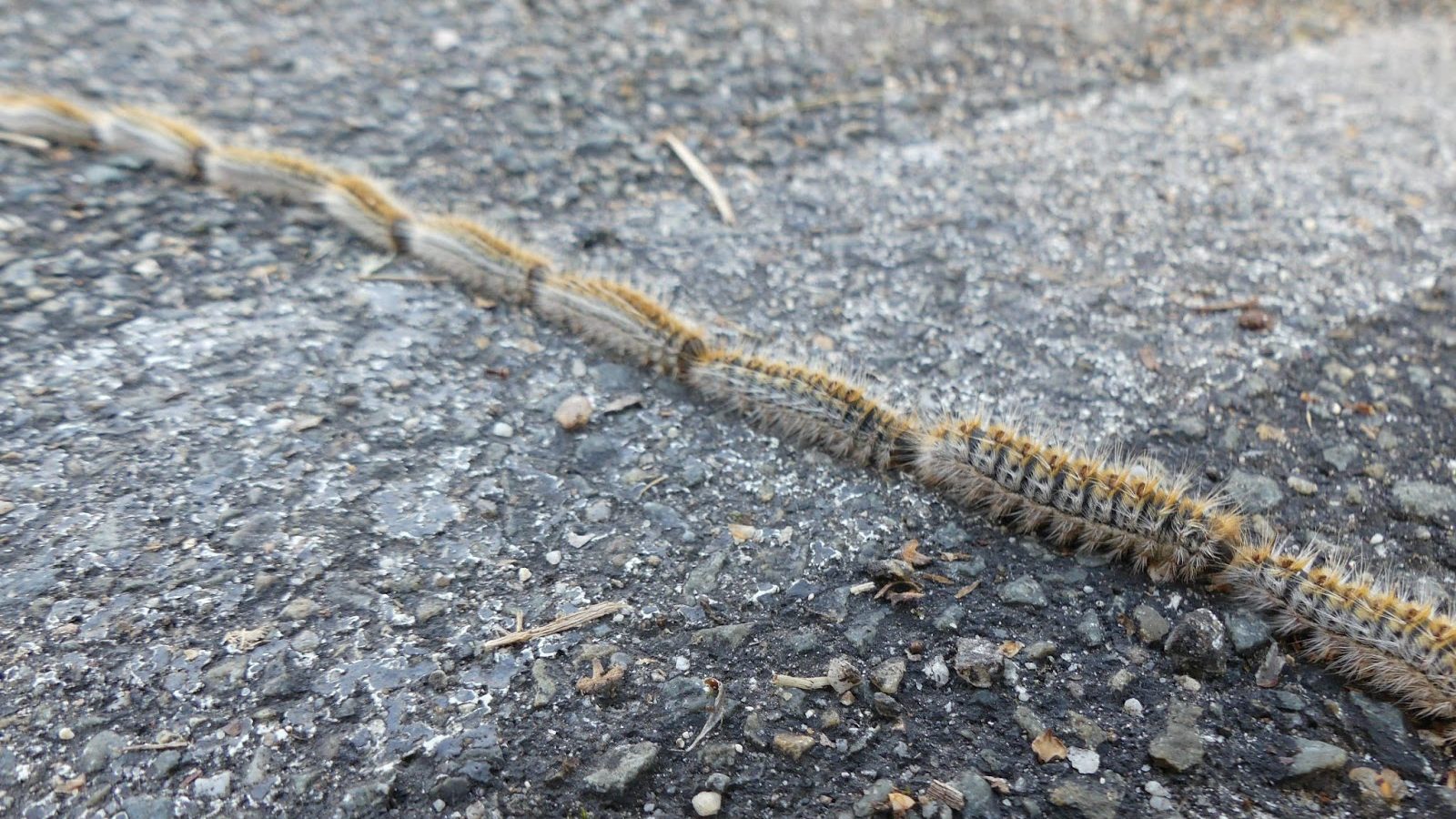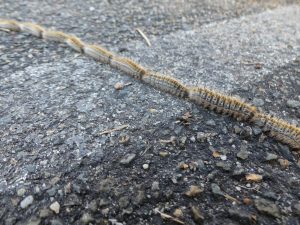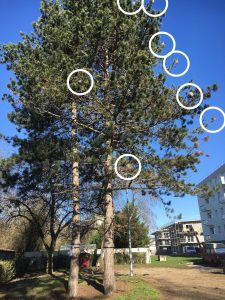Global Change Fellow Shows Urban Heat Increases Dangerous Caterpillar Stage

2015-2016 Global Change Fellow Kristi Backe was lead author and SE CASC Faculty Affiliate Steve Frank was co-author on a new publication, Human health risks of invasive caterpillars increase with urban warming, which was released in the journal Landscape Ecology on March 11, 2021. Kristi describes some highlights of the project below.
For thousands of years, people in the Mediterranean Basin have been studying and complaining about the pine processionary moth (PPM), which gets its name from the long parade (or “procession”) the larvae make when they leave trees to pupate in the soil. PPM larvae are covered in setae (hair-like structures) that cause allergic reactions when they touch the skin, eyes, or respiratory tract of warm-blooded vertebrates like humans. (If you’re curious about these reactions, you can read more and see pictures in Vega et al. 2011.) The larvae are most hazardous during the fifth (final) instar, or development phase, when they each have one million setae.

PPM is a rarity among temperate insects – the larvae feed and develop during the winter. When winter temperatures are too cold (below 0 °C at night and/or below 9 °C during the previous day), the larvae stay in their nests at night instead of feeding on their conifer host trees. When the temperatures are really too cold (below -17 °C), the larvae can freeze to death. In recent decades, PPM has expanded its range into areas that were previously too cold for its development and survival. In these areas, winter temperatures hover around PPM feeding and survival thresholds. We wondered how a difference of a few degrees – like the difference between the temperatures in a city and the temperatures in the (cooler) surrounding forests – might affect PPM larva development and survival in this expansion range.
We chose to test this idea in Orléans, France, a city about 100 km south of Paris, with collaborators from the French National Institute for Agronomic Research. We predicted that in the warmer city center, the larvae would develop faster than in the cooler forests surrounding the city. Faster development means less time spent in a particular development phase, so we predicted that larvae in the city would spend less time as dangerous fifth instars than larvae in forests. What we found was a surprise, and not a good one. In the city, where PPM larvae are living in close proximity to high densities of people, the larvae actually spent more time as fifth instars than larvae in forests, even though the city was warmer.

How did this happen? You can read the full paper here, but the upshot is: The larvae tended to spend the entire winter in whichever instar they had reached by early December. Most larvae in the city reached the fifth instar by the start of winter. Then, they essentially waited it out until spring, when conditions were right for them to leave the trees and pupate. In forests, most larvae spent the winter as fourth instars. When spring arrived, they molted into fifth instars and then quickly left the trees in pupation processions. Overall, the larvae in the city spent months as fifth instars while larvae in forests spent weeks as fifth instars.
Our results highlight how multiple anthropogenic changes – like urbanization and climate change – can interact. We conducted our study in the PPM’s expansion range (in other words, in an area that was too cold for PPM several decades ago until minimum winter temperatures increased with climate change). We found that the implications of this range expansion for people (such as how long people can expect to be exposed to larvae in their most dangerous instar) depend on the level of urbanization. Our study highlights how urban areas can affect the development and survival of organisms that are dangerous to humans, and we call for special consideration of urban environments when studying organisms that are expanding their ranges into areas where millions of people live.
- Categories:
